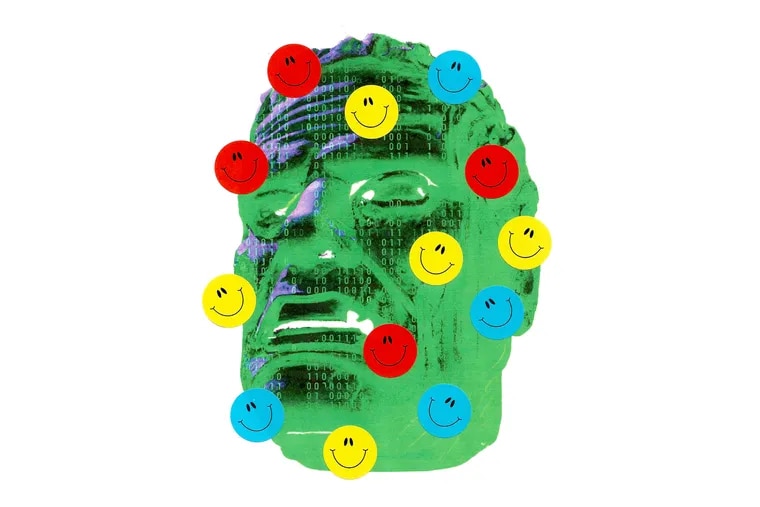 It is a tool that will transform your friends into superheros, astronauts, ethereal fairy princesses, and anime leads.
It is a tool that will transform your friends into superheros, astronauts, ethereal fairy princesses, and anime leads.
Over the last few weeks, Lensa, a popular app that uses artificial intelligence to transform photos into art, has surged in popularity. Users began posting elevated selfies. As of Monday, the #Lensa has more than half a million posts on the photo sharing site. The app was downloaded over 1.5 million times in November.
Artists say the discussion surrounding artificial intelligence created art comes with its own pros and cons.
You need to know what to look out for.
One of the artificial intelligence image generators that lets users create and post artistic depictions of their own photos is called Lensa. The app has been around for a while, but there was a new feature that drew new attention.
The app can transform user-uploaded photos into as many as 200 virtual characters. Stable Diffusion is an artificial intelligence that can generate images from text and make them look like they were made by an artist.
The basics are here:
There is a one-week free trial available. Depending on the number of images you want, it costs up to $16 to get access to the magic avatars feature.
Users can choose their gender from a list of 10 to 20 photos.
The app takes 15 to 20 minutes to generate the images after selecting the number of photos.
avatars are available to save and share once they’re ready. They have options like Fairy Princess and Stylish.
Users say that curiosity draws them in as the art becomes more accessible.
Ryan Evans is a New Jersey-based artist who works in Philadelphia.
He said that his narcissistic ass couldn’t stay away. I had to pay $3.99 for 50 bad illustrations of myself.
Evans has been playing with the app.
He said that it was a fun tool. I wouldn’t be able to generate things on my own if it weren’t for it. Things like distorted 3D versions of my favorite characters.
Evans called it addictive at first, but now he doesn’t use it very much.
According to Refinery29, a majority of widely shared Lensa avatars have been posted by white people.
The app can be used to see a version of themselves that feels more authentic for people who experience body dysmorphia or who want to see a version of themselves that feels more authentic. It’s become a way for people to experiment with their image before committing to a change.
Other artificial intelligence platforms, like DALL-E, made their way into the mainstream.
DALL-E, which experienced its own trending period on social media earlier this year, allows users to describe what kind of art they are looking for in 400 characters or less. The generator spits out its interpretation at the end. The weird and wonderful results were posted by some users.
A wise cat meditating in the Himalayas, a rabbit detective sitting on a park bench and reading a newspaper are just some of the possibilities.
The tools are getting better and better.
Artificial intelligence generators are getting smarter the more they are used, according to a Jacksonville, Fla.-based creative director and designer.
He said they would spend or time finding the best ways to use the tools to their advantage while feeding their data sets the most strategic inputs possible.
Spencer said that as the generators become stronger, they can potentially put creatives out of work.
He said that once their models are trained to think like us, they can sell products and services that more or less replace us.
The platforms that feed from open-source are accused of using nonprofit loopholes to access thousands of real images and photographs. The stock art service, Shutterstock, was reportedly used to train Dall-E’s Artificial Intelligence.
Evans used Dall-E to create an illustration for the article about how quickly artificial intelligence services can create art.
He said that he used a combination of detailed phrases, such as a 3D sculpture, digital menacing face, and neon green glowing computer rendering, on a white background. The programs like DALL-E tend to function better with longer phrases.
Evans received a 3D rendering of an eerie green face with sunken eyes after about 15 attempts to match his vision. To bring back the handmade touch only we can accomplish, he added some signature touches, including abinary Matrix-like code and colorful smiley face stickers.
Evans took a little over an hour to complete the process. He said that time would have been tripled if it wasn’t for the use of artificial intelligence.
Evans says that it is important for companies looking to commission art to consider the source of the product.
Privacy concerns have been prompted by the risk of replacing artists with artificial intelligence.
Users worry about how their images will be used, similar to the concerns raised in 2020 over FaceApp, a Russian app that uses artificial intelligence to create photos of people aging.
After the avatars are finished, the photos are deleted from the server. The privacy policy of the app states that it does not claim ownership but seeks permission to use user content.
Evans says there will be companies and artists who use artificial intelligence poorly. Some people will see it in a fun way. I hope we remember the difference.
/cloudfront-us-east-1.images.arcpublishing.com/pmn/C3PSUMCB2BDUHLPEO6GU7NURVM.jpg)